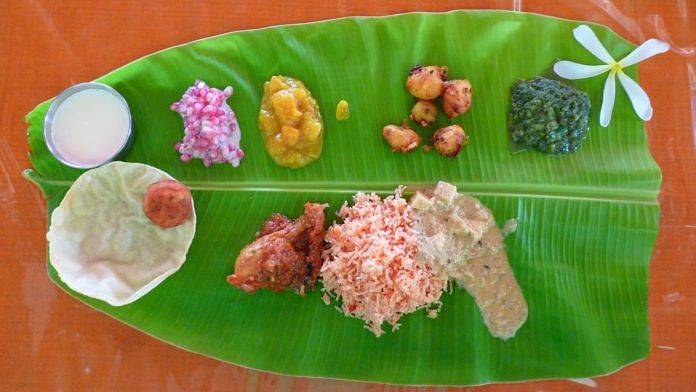The World Health Organization reported the life expectancy of an Indian to be 70.8 years in its 2019-20 report. Over the last two centuries, India’s life expectancy has increased consistently but is still lower than the global average of 73.4 years.
Human life expectancy depends on multiple factors. A 2018 review study assessing life expectancy in low and medium human development index countries investigated health indicators of 83 nations from the World Bank, WHO, United Nation Development Fund and UNICEF databases. The authors reported socio-economic status, healthcare system, adult literacy rate, disease burden, and the interaction of these factors as major determinants of life expectancy.
Unhealthy food choices and associated risks are among the leading causes of death globally. According to the WHO’s latest factsheet (13 April 2021), noncommunicable diseases (NCDs) contribute to 71 per cent of global deaths. Annually, around 15 million people between 30 and 60 years of age die prematurely from NCDs — 85 per cent of these deaths are from lower and middle-income countries. Cardiovascular diseases are the most prevalent cause of death across the world, followed by cancers, respiratory diseases, and diabetes. These four groups alone are responsible for 80 per cent of all premature deaths. Potential risk factors for NCD include lack of physical activity, poor dietary choices, excessive consumption of alcohol, tobacco, stress, etc.
Also read: Women in India live longer than men but don’t have healthier lives, finds new report
Are Indians eating healthy to support longevity?
A 2020 study by Manika Sharma and colleagues comparing the Indian diet with the EAT-Lancet Commission reference diet included samples from 1.02 lakh households in India and found that whole grains were contributing significantly more calories than the EAT-Lancet recommendations, whereas the consumption of fruits, vegetables, legumes, meat, fish and eggs were much lower. Protein share was only 6-8 per cent, compared to the 29 per cent recommendation. These outcomes were independent of the socio-economic status of Indian households. Even the rich Indians were not found to consume optimum amounts of fruits, vegetables, and proteins in their diet. In fact, an average Indian household consumes more calories from processed foods than fruits. Authors concluded the average Indian diet as unhealthy, lacking essential food groups.
Another national-level cross-sectional survey in 2017-18 by the National NCD Monitoring Survey studied the prevalence of risk factors in 12,000 Indian adults. It revealed that 32.8 per cent of respondents used tobacco, 15.9 per cent consumed alcohol, 41.3 per cent were not physically active, 98.4 per cent consumed less than five servings of fruits and vegetables per day. The study also reported an elevated risk of blood glucose and cardiovascular diseases among participants.
Also read: In India’s booming junk food market, there is little room for nutrition
Blue Zone diet to live longer
Blue Zones, a concept developed by National Geographic Fellow and author Dan Buettner, are the five regions of the world where people live longer, lead physically and mentally healthy lives, and are more active compared to the rest of the world. To live longer, the Blue Zones adopted nine evidence-based lifestyle modalities that are thought to slow the ageing process, diet being one of the most important components.
The Blue zone diet is whole and mostly plant-based. Ninety five per cent of the daily Blue zone diet is composed of vegetables, fruits, whole grains, beans, legumes, nuts, olive oil, berries, oats, and barley. The diet recommends avoiding meat and dairy, sugary drinks, with no room for processed foods.
In contrast to the standard diet composition, Sardinia, one of five Blue Zones, follows a variation of the Mediterranean diet that includes all Blue Zone food groups along with moderate intake of fish and fewer intake of dairy, alcohol, and red meat.
Plant-based Blue Zone diets are rich in antioxidants and anti-inflammatory polyphenols, which are reported to prevent chronic illnesses such as obesity, diabetes, cancer, and cardiovascular disease.
A 2015 review by G.M. Pes and colleagues mapped historical evidence linked to male longevity among the Sardinian population and found that an inter-community nutrition transition to consuming more fruits and vegetables and moderate consumptions of meat led to significant health benefits to the ageing population by reducing mortality risk.
However, a wholesome, nutritious, antioxidant-rich diet isn’t the only secret behind the Blue Zone longevity. The people living there also engage in high levels of physical activity, have low-stress levels, more social engagement, and a sense of well-being.
Dietary modification to Indian diet
Eating like a Mediterranean is recommended as a part of longevity diet for the Indian population that includes more raw fruits and vegetables in salads; whole grains instead of polished rice; legumes, pulses, and beans in form of sprouts, salads, less spicy curry; healthy fats from nuts, seeds, olive oil, coconut, and avocado; along with limited intake of meat and sweets.
All processed foods like refined sugar, refined wheat flour, biscuits, instant noodles should be gradually eliminated from the daily diet.
Also read: Two-third Indians with non-communicable diseases fall in 26-59 age group, survey finds
List of foods
Include these elements of the Mediterranean diet in your meals:
-Oats, barley, jowar, bajra, ragi, kodo millets, quinoa
-Dark green leafy vegetables like spinach, lettuce, drumstick leaves
-Nuts like almonds, walnuts, figs
-Seeds like flax, chia, pumpkin, sunflower, beans
-Legumes like navy beans, fava beans, chickpeas, lentils
-Dairy products like low-fat cheese, yogurt, milk
-Fish like sardines, salmon, trout, sea fishes
-Herbs and spices like mint, rosemary, sage, garlic, thyme, basil, and oregano.
To summarise, a vibrant, nutritious eating plan along with regular physical activity, sound sleep, and stress-free life is the key to acquiring a disease-free, long life.
Indians can start practising this one day at a time.
Dr Subhasree Ray is Doctoral Scholar (Ketogenic Diet), certified diabetes educator, and a clinical and public health nutritionist. She tweets @DrSubhasree. Views are personal.
(Edited by Neera Majumdar)



